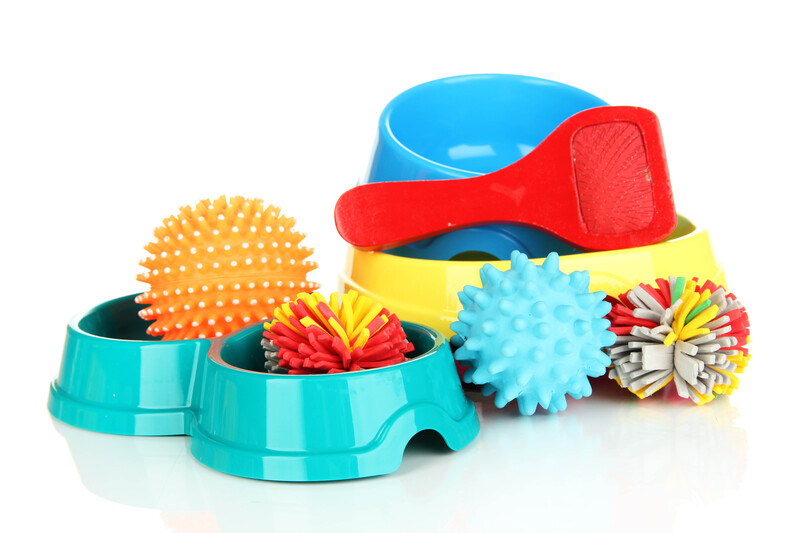Tips to Make Sure Your Freezer Stays in Top Shape While in Storage
Storing your freezer for an extended period? Whether you're moving, renovating, or simply need to free up some space, it's crucial to know the best practices for keeping your freezer in excellent condition while it's not in use. In this comprehensive guide, we'll walk you through everything you need to know to ensure your freezer stays in top shape during storage. From proper cleaning methods to ideal storage conditions, you'll find actionable steps to prevent damage, avoid unpleasant odors, and maintain the longevity of your appliance.
Why It's Important to Store Your Freezer Properly
A freezer is a significant investment, and improper storage can lead to multiple issues including mold, rust, and even internal component failure. Leaving your freezer unattended without following important steps can result in expensive repairs, wasted energy, and a reduced appliance lifespan. Knowing how to store your freezer the right way protects both your equipment and your wallet.
Common Problems from Improper Freezer Storage
- Mold and mildew growth due to residual moisture
- Corrosion and rust on internal and external components
- Bad odors trapped inside the appliance
- Mechanical issues from stagnant water or trapped debris
- *Warping* or cracking of seals and doors

Preparation: How to Get Your Freezer Ready for Storage
1. Unplug and Remove All Contents
The first step in making sure your freezer remains in top shape while stored is to unplug the unit. Remove all food items and any removable baskets or shelves. This not only prevents spoilage but allows for thorough cleaning and drying later in the process.
2. Defrost Your Freezer Completely
- Turn off and unplug the freezer at least 24 hours in advance.
- Leave the doors open to allow any ice to melt naturally. Avoid using sharp tools to chip ice as this can damage internal surfaces.
- Place towels or a shallow pan to catch melting water and prevent floods.
*Tip*: Dispose of any water collected in drip trays or pans underneath the unit.
3. Deep Clean the Freezer Interior and Exterior
Thorough cleaning is essential to prevent mold, odors, and bacteria buildup. Use a mixture of baking soda and warm water (about 2 tablespoons of baking soda per quart of water) for a safe and effective cleaning solution.
- Wipe down all interior surfaces and shelves.
- Remove shelves or drawers and clean them separately.
- Clean the gaskets and seals carefully to prevent *cracking* and warping.
- To avoid damaging electrical components, don't allow excess water near control panels or wiring.
For tough odors, consider leaving an open box of baking soda or activated charcoal inside the freezer for a few hours before storage.
4. Dry Thoroughly Before Storage
It's vital to ensure every part of your freezer is completely dry. Moisture left behind is the main cause of mold, mildew, and rust during storage.
- Use towels to remove visible dampness from all surfaces.
- Allow the freezer to air dry with the door open for several hours--even overnight if possible.
- Check door gaskets, shelves, and water catch trays for trapped moisture.
Proper Freezer Storage Techniques
1. Store with Doors Slightly Open
One of the most important freezer storage tips is to leave doors slightly open instead of sealing them shut. This allows air circulation and prevents musty smells or mildew growth.
- Use a rolled-up towel, block of wood, or specially designed freezer door spacer to keep the doors ajar.
- Check occasionally to ensure the doors remain open during the storage period.
2. Choose a Suitable Storage Location
Where you store your freezer can make a significant impact on its condition over time.
- Pick a cool, dry, and well-ventilated area if possible.
- Avoid direct sunlight to prevent fading or warping of plastics and seals.
- Keep the appliance away from sources of moisture or water leaks.
- Try to store your freezer indoors if possible. Outdoor storage exposes it to harsh weather, temperature fluctuations, and pests.
3. Elevate the Freezer Off the Ground
To protect the exterior base of your freezer--and its internal mechanisms--from moisture, use pallets, furniture sliders, or sturdy blocks to lift the unit a few inches off the ground. This also helps prevent accidental water damage from floor leaks or flooding.
4. Cover, But Don't Seal Too Tight
To guard against dust and grime, cover your freezer loosely with a breathable material such as a sheet or appliance cover. Avoid using plastic tarps for long-term storage, as these can trap moisture and encourage mold.
- Make sure the cover extends over the entire appliance, but isn't air-tight.
- Periodically check beneath the cover for any signs of moisture or pests.
Long-Term Storage Maintenance Tips
1. Check Your Freezer Periodically
- Visit your storage location every 2-3 months, if possible.
- Look for signs of moisture, rust, or rodent activity.
- Air out the freezer and wipe away any dust or cobwebs.
Staying proactive ensures you can address small issues before they become expensive problems.
2. Maintain Climate Control
If you live in a region with extreme weather, consider renting a climate-controlled storage unit for your freezer during off seasons. Fluctuations in humidity and temperature can cause condensation and affect the efficiency and longevity of your appliance.
- Keep the storage area's humidity below 60% if possible.
- Try to avoid freezing and thawing cycles if the freezer is stored outdoors.
3. Avoid Storing Heavy Items on Top
- While in storage, do not use the freezer as a shelf. Placing heavy boxes or equipment on top can warp the lid or damage hinges and seals.
Prepping the Freezer for Use After Storage
1. Inspect Thoroughly Before Plugging In
Before connecting your freezer to power again, check the following:
- Examine the interior and exterior for pests, debris, or water damage.
- Double-check that all parts, including shelves and gaskets, are intact and properly reinstalled.
- Ensure the cord isn't frayed and the plug is undamaged.
2. Clean and Deodorize If Necessary
- If you notice any musty smells, repeat the cleaning process using baking soda or a mild solution of vinegar and water.
- Freshen the freezer by leaving it open for a few hours before plugging it back in.
3. Allow Your Freezer to Settle
If the unit was moved or tipped on its side, let it stand upright for at least 4-6 hours (or as recommended by the manufacturer) before turning it on. This gives the compressor oil time to settle back into place, preventing potential mechanical damage.
4. Restore Power and Monitor Performance
- Plug in the freezer and set it to your desired temperature.
- Listen for any unusual noises and double-check the cooling function over the next 24 hours before restocking with food.

Frequently Asked Questions about Storing Freezers
Should I store my freezer upright or on its side?
Always store your freezer upright. Storing it on its side or back can damage the compressor and cooling lines, leading to leaks or mechanical failure.
Can I store a freezer in a garage, shed, or outdoors?
While it's possible to store your freezer in a garage or shed, it's better to avoid areas with wide temperature swings, high humidity, or direct sunlight. If outdoor storage is your only option, take extra precautions to elevate the appliance, use a breathable cover, and check it regularly for moisture or pest issues.
Is it safe to store a freezer plugged in and running?
If you choose to leave your freezer running during storage, ensure it's empty, cleaned, and checked regularly for proper function. However, this can consume electricity and is generally unnecessary if the appliance won't be used for a long time.
How do I deal with freezer odors after long-term storage?
- Clean the interior with a baking soda and water solution.
- Leave the door open with activated charcoal or newspaper inside for a few days to absorb smells.
- Repeat cleaning if odors persist, avoiding harsh chemicals that might linger when you store food again.
Conclusion: Extend the Life of Your Freezer with Smart Storage
By following these comprehensive freezer storage tips, you'll ensure your appliance stays in top shape for years. The key takeaways are:
- Thorough cleaning and drying before storage are essential.
- Store in a dry, well-ventilated location, ideally indoors.
- Leave the doors slightly open to prevent musty odors and mold.
- Elevate and loosely cover your freezer to protect against dust and moisture.
- Periodically inspect and maintain your stored freezer, being proactive about any signs of trouble.
A little effort now can protect your investment, spare you expensive repairs, and keep your freezer ready for use when you need it again. Use this guide whenever you plan to store your freezer--short- or long-term--for peace of mind and lasting performance!
Want more tips for maintaining your home appliances? Browse our blog for expert advice on making your appliances last longer.